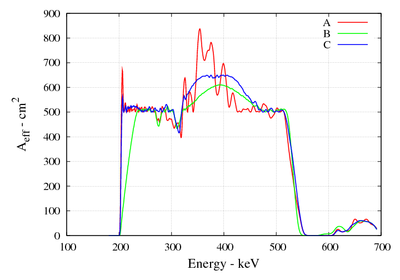|
Genetic algorithms for the GRIIn these days I produced a really beautiful piece of software to optimize the GRI effective area. Genetic algorithms are used to optimize the crystal distribution on a Laue lens, a problem too complex to be solved in other ways. The lexycon used in the following is typical of this well established science.
The underlying idea is the following: the crystal distribution
in the lens is like the genome and each lens has its own.
Different crystal arrangement produce different effective area
and we want the effective area to be as smooth and as high as
possible.
The complete genome is a sequence of all the genes for the
rings in the lens.
The effective area is now computed (represents the fenotype)
and evaluated through a fitness function that returns how much
a lens effective area fits the requests.
to keep the population constant. The best elements of three populations after several loops (generations) are showned here. 
The different curves are obtained trying to satisfy the requests:
Of course these are only examples. The number of generation needed to converge to satysfying results depends on the choices of the user, like the population number and the number of newcomers of each type and on the mutation and crossover function. At the end it becomes a very nice game to play with :) |
|
|||||||||||||||||||||||||||||||